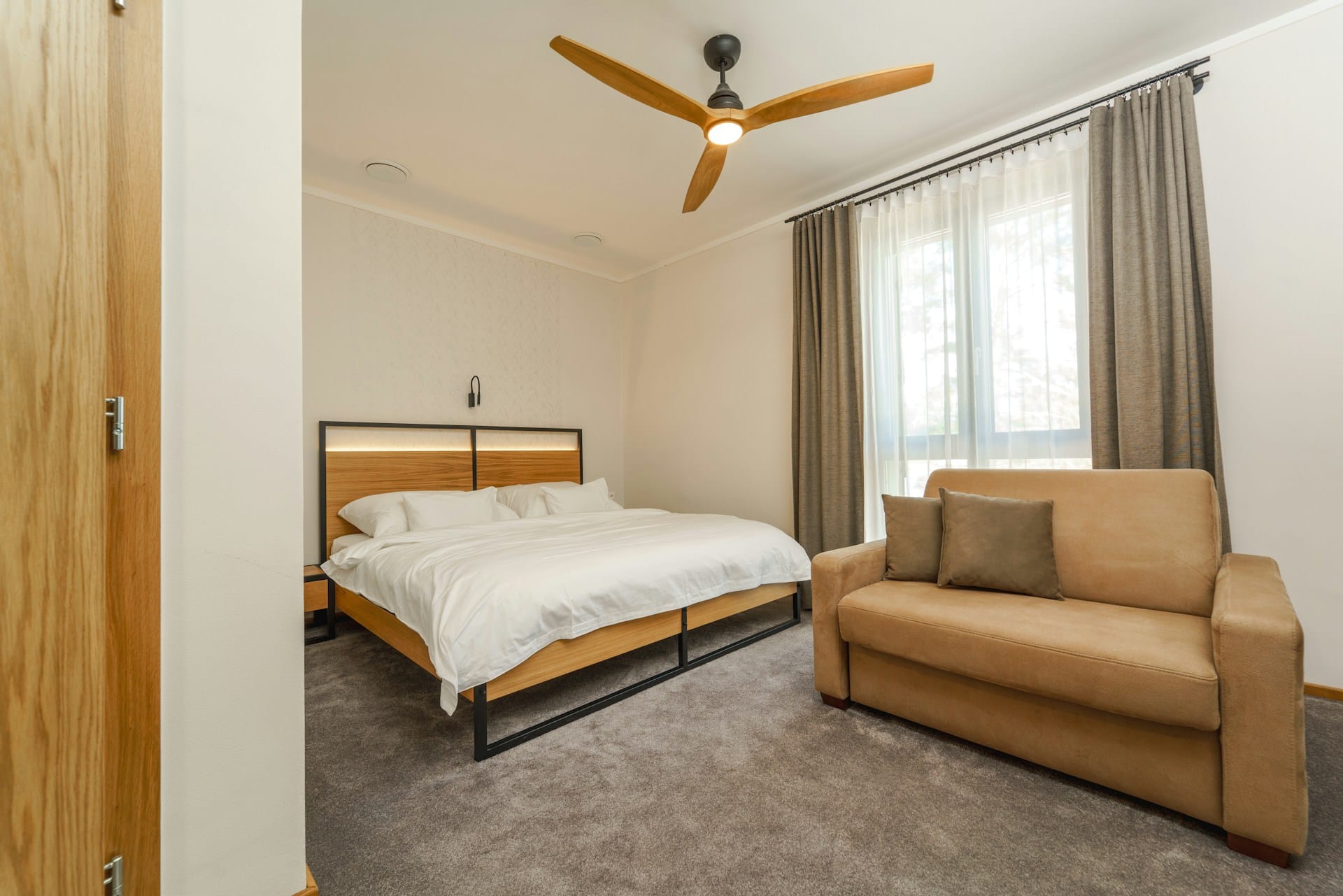Ceiling fans are an excellent way to keep your home comfortable and stylish. But did you know they also serve a dual purpose by improving lighting? This often-overlooked feature can make a big difference in how your indoor spaces look and feel. By combining airflow and illumination in a single fixture, ceiling fans create a comfortable environment and save space.
Choosing the right ceiling fan with lighting involves more than just considering style. Understanding how these fans can fit your specific needs helps in selecting the perfect fixture for any room. Whether it’s the size of the fan, the type of bulb, or the overall design, each choice plays a vital role in achieving the desired lighting effect and air circulation.
Proper installation is key to getting the most out of your ceiling fan with lights. Placing them correctly ensures optimal performance, boosting both the light and air benefits. With the bonus of enhanced energy efficiency, ceiling fans become an integral part of the home, helping to cut down on heating and cooling costs while brightening up spaces. Explore how these fans can transform your home into a more pleasant, well-lit haven.
Understanding the Dual Functionality of Ceiling Fans
Ceiling fans are more than just decorative fixtures—they play a key role in enhancing comfort and lighting. Traditionally known for circulating air, ceiling fans help regulate room temperature. They can make spaces feel cooler in the summer by pushing air down and warmer in the winter by drawing cool air up. But the addition of lighting elevates their utility to meet various room needs.
Combining lighting with airflow makes ceiling fans a smart choice for optimizing space. Instead of installing separate fixtures for air and light, one unit can efficiently deliver both. This integration is especially beneficial in rooms where space is limited or where you want to maintain a streamlined aesthetic. Ceiling fans with lights offer adjustable light settings, allowing versatility in how you illuminate your room.
The benefits of combining these functions transcend convenience. Having a fan that lights up a room without the need for additional lamps or overhead lights can simplify your space. It reduces clutter by eliminating extra fixtures and cables. Furthermore, it can save on installation time and costs, as fewer fixtures need to be installed separately. Ceiling fans providing both light and air circulation prove to be a practical and stylish choice for any room in a house.
Choosing the Right Ceiling Fan with Lighting
Picking the right ceiling fan with lighting involves several considerations. First, consider the size of the fan blades. Larger blades move more air, making them suitable for larger rooms, while smaller blades fit well in tighter spaces. Next, pay attention to the type of light bulbs used. LED bulbs are energy-efficient and long-lasting, making them an excellent choice for most homeowners. They offer various color temperatures and brightness levels, which can be customized to fit the vibe of the room.
Before buying, check the style of the fan and how it fits with your room’s décor. Modern fans with sleek blades might suit minimalist spaces, while traditional fans with ornate designs may complement classic or rustic interiors. Consider the control options as well—many modern fans come with remote controls or even smart integration, allowing for easy adjustments from anywhere in the room.
When matching the fan to a room’s purpose, think about functionality. In living rooms, dimmable lights offer ambiance control, while bright lights may be preferable in kitchens or workspaces. Outdoor-rated fans with water-resistant features are ideal for patios or porches. Combining these elements ensures you select a ceiling fan that not only meets but exceeds your lighting and airflow expectations.
Installation Tips for Optimal Lighting and Airflow
Installing a ceiling fan with lights requires careful planning to ensure you get the best results. Start by selecting the right location. The fan should ideally be centered in the room to distribute air evenly and illuminate the space effectively. If the ceiling is sloped, use an angled mount to maintain level installation. Before starting, make sure the power to the existing light fixture is turned off at the breaker box to avoid electrical shock.
Here’s a simple step-by-step guide:
1. Assemble the fan by following the manufacturer’s instructions carefully. Attach the blades to the motor housing while keeping the screws tightly secured.
2. Install the mounting bracket onto the ceiling, ensuring it can support the weight of the fan—typically, this involves using an electrical box designed for ceiling fans.
3. Connect the wiring from the fan to the wires in your ceiling. Usually, black to black, white to white, and green or copper for grounding. Use wire nuts to secure the connections.
4. Secure the motor housing to the mounting bracket and attach the light kit if it’s a separate piece.
5. Install any bulbs and globe fixtures, then turn on the power to test both the fan and the lights.
Avoid common mistakes like ignoring the fan’s weight limit or forgetting to balance the blades, which can lead to wobbling. Proper alignment ensures both effective airflow and illumination, enhancing your room’s ambiance and comfort.
Enhancing Energy Efficiency with Ceiling Fans
Ceiling fans offer a simple yet effective way to improve energy efficiency in your home. When used properly, they help reduce reliance on heating, ventilation, and air conditioning (HVAC) systems, substantially lowering energy costs. In warmer months, set the fan blades to turn counterclockwise, which creates a cooling effect by pushing air down. This allows you to feel cooler without lowering the thermostat.
When it gets colder, reverse the direction of the blades to clockwise at a low speed. This gentle updraft pulls cooler air up and forces the warmer air trapped by the ceiling to circulate around the room, enhancing comfort without cranking up the heat. By using ceiling fans in this manner, you can adjust your thermostat settings more generously, consequently cutting down on energy consumption.
The dual functionality of fans with lights further contributes to savings. Combining lighting and air circulation in a single fixture reduces the need for multiple electrical installations, which can save on both energy and installation costs. Together, these benefits make ceiling fans a smart choice for energy-conscious homeowners looking to reduce their carbon footprint and save on utility bills.
Conclusion
Ceiling fans provide a versatile solution for enhancing both comfort and style in any home. By understanding their dual functionality and choosing the right fan, you tap into improved air circulation and effective lighting. Proper installation ensures that these fans achieve their full potential, optimizing both the airflow and the illumination in your rooms. Additionally, the energy efficiency gained from using ceiling fans helps in conserving resources and lowering utility bills. These factors make ceiling fans a worthwhile addition to any household.
Thinking about upgrading your home with ceiling fans? Azael Electrical is ready to help. Our experienced team can assist you in selecting the perfect fan with lights that match your style and functional needs. Let us handle the installation safely and efficiently, ensuring you make the most out of your new fixtures. Contact our professional electricians today to start enhancing your home’s ambiance and comfort.

